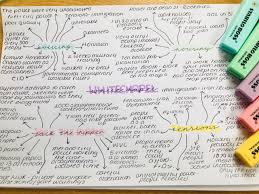Para-social relationships
Cards (7)
- what two explanations are there for the formation of PSRs?
- attachment theory explanation
- absorption addiction model
- describe the attachment theory explanation to PSRsrelationships with TV personalities can exhibit three fundamental properties of adult attachment
- proximity seeking- individuals attempt to reduce the distance between themselves and their attachment figure. People like to stay informed about their favourite celeb- collect trivia about them or rearrange schedules to see them on TV
- secure base- little to no chance of rejection from the attachment figure in a PSR, so individual creates a secure base from which they can explore other relationships in a safe way
- protest at disruption- prolonged distress following loss of attachment figure- for example when a show ends or they die
- which attachment type is most and least likely to form PSRs?Cole and Leets concluded someone's willingness to form a PSR with their favourite TV personality is related to their attachment beliefs
- insecure resistant- most likely to enter PSR- this attachment style is characterised by a concern that others won't reciprocate their desire for intimacy. These individuals turn to a PSR as a means of satisfying unrealistic and unmet needs
- insecure avoidant- least likely to enter PSR- find it difficult to develop intimate relationships and are less likely to seek real life relationships OR PSRs. They avoid relational and imagined intimacy
- according to the absorption addiction model, why do people form PSRs?
- lack of real relationships in a person's life
- creates a void that can be filled by a PSR
- such relationships may be appealing because they make few demands on the individual
- there's no real relationship, so fan doesn't run the risk of criticism or rejection
- PSRs more likely to be formed with characters the individual is attracted to (perception of attractiveness) and viewed as similar to the viewer (perception of homophily)
- describe the three levels of the celebrity attitude scale identified by Giles and Maltby
- entertainment social- fans keep up with read about and watch favourite celeb for the purpose of entertainment and gossip
- intense personal- deeper level of involvement that reflects intensive and compulsive feelings about celebrity.
- borderline pathological- individuals identify strongly with celeb's successes and failures. Also characterised by over-identification with celeb and uncontrollable behaviours/fantasies about their lives
- how does absorption develop into addiction?
- Lange et al- for some teens, introversion, a lack of real rels and social circumstances may cause them to become increasingly absorbed with PSRs
- absorption involves focusing an effortless amount of attention which leads fans to believe they have a special relationship with that person
- person moves onto higher levels of para-social interaction, leading to extreme/delusional behaviours to sustain satisfaction with PSR
- The PSR becomes addictive because of stronger involvement required to remain connected
- initial interest in a celeb and development of PSR = absorption, interest is maintained through addiction
- evaluation of PSRs?
- 😊research support- Kienlan et al- 63% of stalkers experience a loss of primary caregivers during childhood. Supports idea that disturbed attachment patterns = related to extreme forms of PSR.
- 😊Cohen- viewers show same negative response to the loss of a PSR as to a real relationship- evidence for protest at disruption and the linkage of PSRs to attachment style
- ☹️Absorption addiction model has limited explanatory value- description and not explanation of processes happening in a PSR. Lack of evidence for AAM- lack of testability
- ☹️can use either attachment theory or AAM to counteract the other
- 😊psychotherapy used to address underlying causes/drugs to reduce obsessive tendencies
